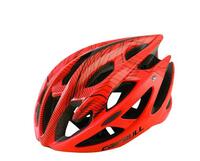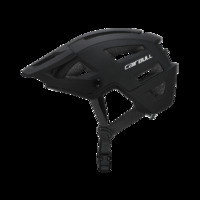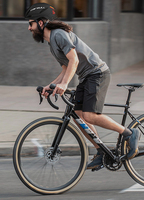ULTRA LIGHT, VENTILATED, COMFORTABLE, TRAIL PROTECTION!
Specifications
JOIN US AS A DEALER
Style Meets Safety
CAIRBULL, based in China, specializes in developing, designing, and manufacturing of sport and safety helmets of the highest quality with best price. CAIRBULL helmets are at the forefront, be it
cycling, skiing, ski touring, BMX, horse riding, climbing, mountaineering, expedition and rescue helmets. CAIRBULL take the women, youth and kids into consideration of our series at the same time.
Your mountainbike helmet from CAIRBULL
BUYER'S GUIDE FOR THE BEST FULL FACE MOUNTAIN BIKE HELMET
You should consider the following factors before buying a full face mountain bike helmet.
Construction
The mountain bike helmets you are set to go for should be made of top quality materials such as ABS, PC, and many more.
This is because a sturdy material makes a helmet strong enough to overcome any impact in the event that things do not go as planned.
Size
You should choose a helmet that fits you perfectly. This means the helmet should not be too tight to the extent that it is causing all sorts of discomforts.
It should also not be too wide to the extent that it is inconveniencing you, especially during windy days.
Certification
Since your life literally depends on the helmet you are choosing, it is important to choose a certified brand. With that said, you should consider bulk bicycle helmets that have such certifications
as EN 1078, CPSC, among others. These certifications show that helmets are not just quality but also they are safe to use.
Comfort
Your helmet should be built with comfort in mind. It should, therefore, have cheekpads, liner, and other features that improve comfort.
Ideally, the liner should be removable for easy washing and convenience. Another feature that your helmet should have is the vent, which allows air to flow freely across your head.
THINGS TO CONSIDER BEFORE BUYING A MOUNTAIN BIKE HELMET
There is no higher adrenaline rush than tearing down the mountain at just under breakneck speed, whether you're at a bike park with lift assistance or you cranked out those gears to the summit on
your own power. And even though you could be getting ready for your first experience with this breathtaking hobby, you shouldn't skimp on safeguarding your dome. Helmets are the one piece of
equipment you should never ride without, even more, crucial than the bike itself. The possibilities for helmets can seem limitless because there are so many different manufacturers. At first sight,
choosing the best mountain bike helmet could seem a little intimidating.
1. Type
When choosing a bike helmet, it’s important to consider the type of riding you plan to do. Helmets designed for road cycling don’t typically provide enough protection for the terrain associated
with mountain biking. The three main types of mountain biking are cross-country (XC), all-mountain, and downhill.
Cross-Country (XC)
Cross-country riding involves covering a lot of ground with limited technical terrain. This can involve lots of uphill riding where adequate ventilation is key to surviving the climb.
All-Mountain
All-mountain riding involves more technical downhill terrain and therefore should include more protection than what the average XC or road helmet can provide. All-mountain helmets often provide
more coverage around the temples, the back, and the sides of the head. They often include more padding as well.
Downhill
Downhill riding is found in most bike parks and the bulk of the riding involves careening down rocky and technical terrain. We didn’t include any of the full face mask models in this guide as they
can be super hot if any pedaling is involved.
2.Ventilation
Whether you are logging kilometers on an uphill or tearing down the slopes at a bike park, ventilation is essential. Even on the quick downhills, it's simple to perspire, therefore having a choice
to allow for heat dispersion is crucial. There is a broad variety of possibilities, ranging from thirteen to twenty-six vents, as you can see from the list above. Counting the number of vents is an
excellent place to start, but optimal ventilation is more complicated than that. Some helmets could have fewer vents but do a better job of transferring air from the front to the back.
3.Certification
Since your life literally depends on the helmet you are choosing, it is important to choose a certified brand. With that said, you should consider helmets that have such certifications as EN 1078,
CPSC, among others. These certifications show that helmets are not just quality but also they are safe to use.
- Country: China (Mainland)
- Contact: Colin Huang










